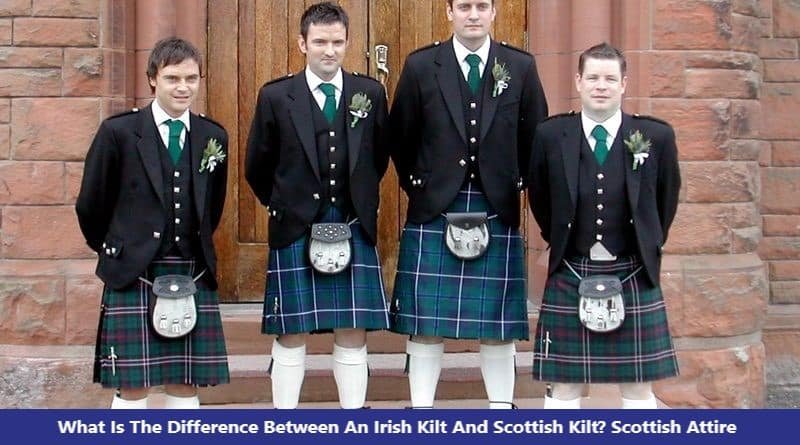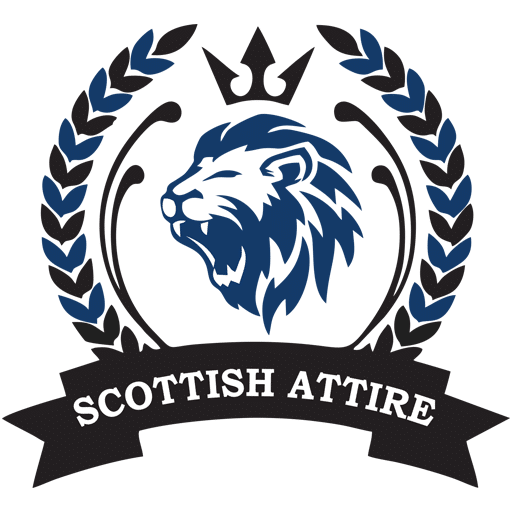What Is The Difference Between An Irish Kilt And Scottish Kilt?

Scottish kilts have a long history that dates back to the sixteenth century. Kilts are commonly linked with Scotland, although they have also long been a part of Irish culture. Ireland and Scotland celebrate their Celtic heritage by wearing kilts, but there are significant distinctions between the kilts worn in each country, which we’ll go through in this article.
Are kilts Scottish or Irish: Scottish Kilt VS. Irish Kilt
Scottish Kilt
The kilt was first worn in Scotland in the sixteenth century. The Feileadh Mor was a long, heavy fabric stretch with a kilt draped over the wearer’s shoulder. The Feileadh Mor was initially intended to provide a layer of defense against the ferocious Scottish weather. They only became a representation of Scottish identity and traditional attire in the early eighteenth century.
Following the Jacobite Risings in 1746, the government outlawed wearing kilts and tartans out of concern for new Scottish clan uprisings. In the latter half of the nineteenth century, the contemporary kilt with its pleats and buckles was invented.
Irish Kilt
Many people thought that the Lein-croich, a long tunic in a solid color, was the first Irish kilt, but this garment is different from a genuine Irish kilt. During the emergence of Irish nationalism and in opposition to the country’s gradual anglicization, the Irish national tartan was introduced as a representation of Gaelic tradition.
The Saffron Kilt is the traditional kilt connected to Ireland. The Saffron Kilt is typically mustard yellow and has shamrock appliques running the pleat length. The most popular kilt in Ireland today, saffron kilts, were first worn by the Irish troops in the British Army during the twentieth century. On the battlefield, Scottish soldiers also wore the Feileadh Mor.
Tartan
Since the tartan used to make the kilts has extremely diverse historical roots and symbolic implications, this is where the Scottish and Irish kilts diverge the most. Each Scottish family has its tartan, which its last name may identify. Scottish tartans are a depiction of a Scottish clan.
The number of registered Scottish tartans exceeds 25,000. On the other hand, Irish tartans are intended to symbolize Ireland’s regions and counties. For instance, if you were originally from Cork, you would wear a kilt from the Cork County Tartan.
What to wear with a Kilt: Kilt Accessories
There are many similarities between the traditional attire worn with Irish and Scottish kilts.
Crests
On ceremonial occasions, Scots wear their clan crests pinned to their plaid. In Scottish weddings, it is customary for a member of the accepting family to sew their family’s crest to the spouse’s plaid. This represents the families’ acceptance and harmony.
In contrast to Scotland, Ireland is less likely than Scotland to have a family crest sewn onto a tartan. Irishmen frequently leave their tartan bare or adorn it with a shamrock crest.
Sporrans
The Sporran, a customary addition to Scottish and Irish kilts, is the pocket fastened to the front of the garment. The sporrans of Scotland and Ireland are similar in many ways. However, you may get Irish sporrans with shamrocks and other green accents.
Similar to how many Scottish sporrans feature classic celtic or Scottish thistle designs.
Jackets
Different jackets are worn with Irish and Scottish kilts for formal and casual occasions. Scots typically pair their kilts with a Prince Charlie jacket for formal occasions. These can be identified by their embellishments on the sleeves, front, lapels, and tails, in addition to their satin lapels and tails. Traditionally, Prince Charlie wore a wing collar shirt, waistcoat, and bow tie. The Brian Baru jacket is the preferred formal wear item in Ireland. For formal occasions, the Brian Baru jacket, similar to the Prince Charlie jacket, would also be worn with a bow tie, waistcoat, and shirt with a wing collar. The Argyle Jacket is a less formal Scottish jacket worn during the day and at night.
The pocket flaps and cuffs of the Argyle include decorative buttons. However, unlike the Prince Charlie jacket, these are not on the back of the garment. The Argyle is typically worn with a bow tie, shirt, and regular collar. The Kilkenny jacket is the Argyle’s Irish equivalent. This is appropriate for both official and informal settings. The Kilkenny has a construction similar to a standard suit jacket, and its front is decorated with elaborate buttons. This is often a hue of Irish green and should be worn with a standard collared shirt, waistcoat, and necktie.
Hats
Scottish culture dictates that the Glengarry be worn with full Highland garb. The Glengarry has a red and white checkered pattern on the side and a toorie (pom pom) on top. Explore Scottish Hats.
Socks and Shoes
Traditional clothing in Scotland and Ireland includes wearing Ghillie Brogues on the feet and knee-high socks with ribbons in the color of your tartan. Although the Irish military sometimes wears black socks with their saffron kilts, these socks are often cream in color. Additionally, it’s customary in Scotland to tuck a tiny knife known as a Sgian-dubh inside the sock on the side of your dominant hand.

